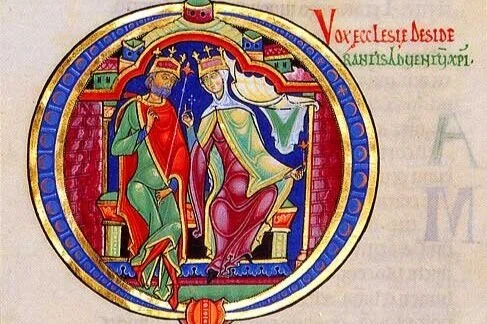Lamentations now let us sing , for Christ, our great and fallen King. Yet, this is wondrous victory, for Him who died upon the tree. Gloria, Gloria, Gloria, Gloria…
Sacred Art, For Whom and For What? Not Teaching Scripture to the Illiterate! Part 1.
The Martyrdom of St Lawrence, by Antonio Campi
Today is the commemoration of the martyrdom of St Lawrence, who died in the persecution of Emperor Valerian in AD 258.
TThis picture was painted by the Italian Antonio Campi and completed in 1581. Stylistically it belongs to what is called the Mannerist period. This runs from the period of the Council of Trent until about the end of the 16th century. Artists were searching for a new Christian harmonization of idealism and naturalism that was not necessarily so slavishly attached to the classical ideal of ancient Greece and Rome, as typified by the High Renaissance masters such as Michelangelo or Raphael, although some still chose to do so. It produced a variety of individual styles, some of which in my opinion had great merit and beauty, such as the paintings of Pontormo and El Greco, but most did not inspire followers. Hence we did not see the emergence of any coherent tradition that could fulfill the directives of the Council as part of the Counter-reformation, until the end of the century. This tradition became what we now call the baroque style and the pioneers were, Titian, lesser-known (today) Francesco Barocci who died in 1612, and the great popularizer of this new style, possibly named after Barocci, Caravaggio.
I chose this painting because it shows the gruesome death of this great martyr on a grid iron. We live in a time more than any other in the recent past of persecution of Christian. In the US it is still a soft persecution (although it may yet become a more violent persecution that involves physical danger, and what Christians in Pakistan, for example, face daily. Nevertheless, I feel the pressure to witness the Faith daily and I pray for the grace the courage to do so (and am dismayed at how easily I hesitate to speak up). Part of the inspiration for me is the courage of these great saints of the past, who stood up to the greatest of tests so heroically.
Some artists stuck more closely to the classical ideal than others. Pontormo's is one who continued to draw heavily to the classical ideal. He painted a picture of the Martyrdom of Saint Lawrence, now lost. Here is one by his student Bronzini:














